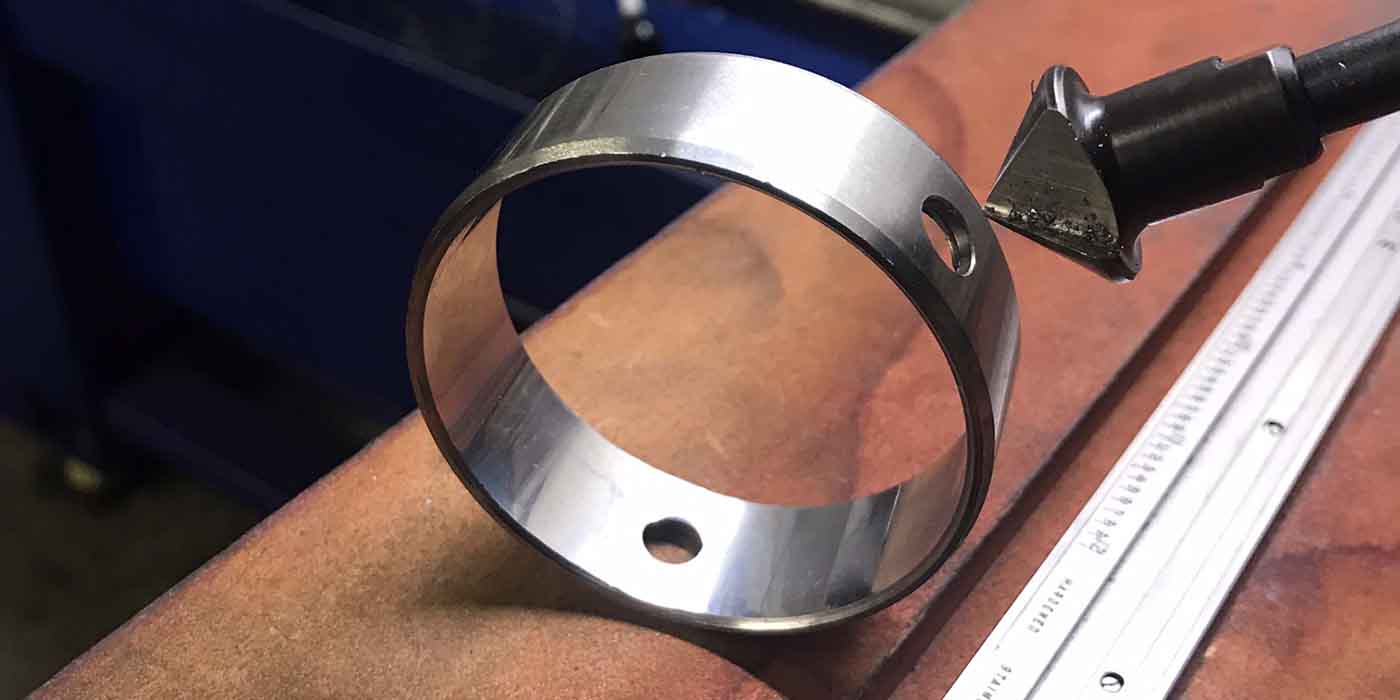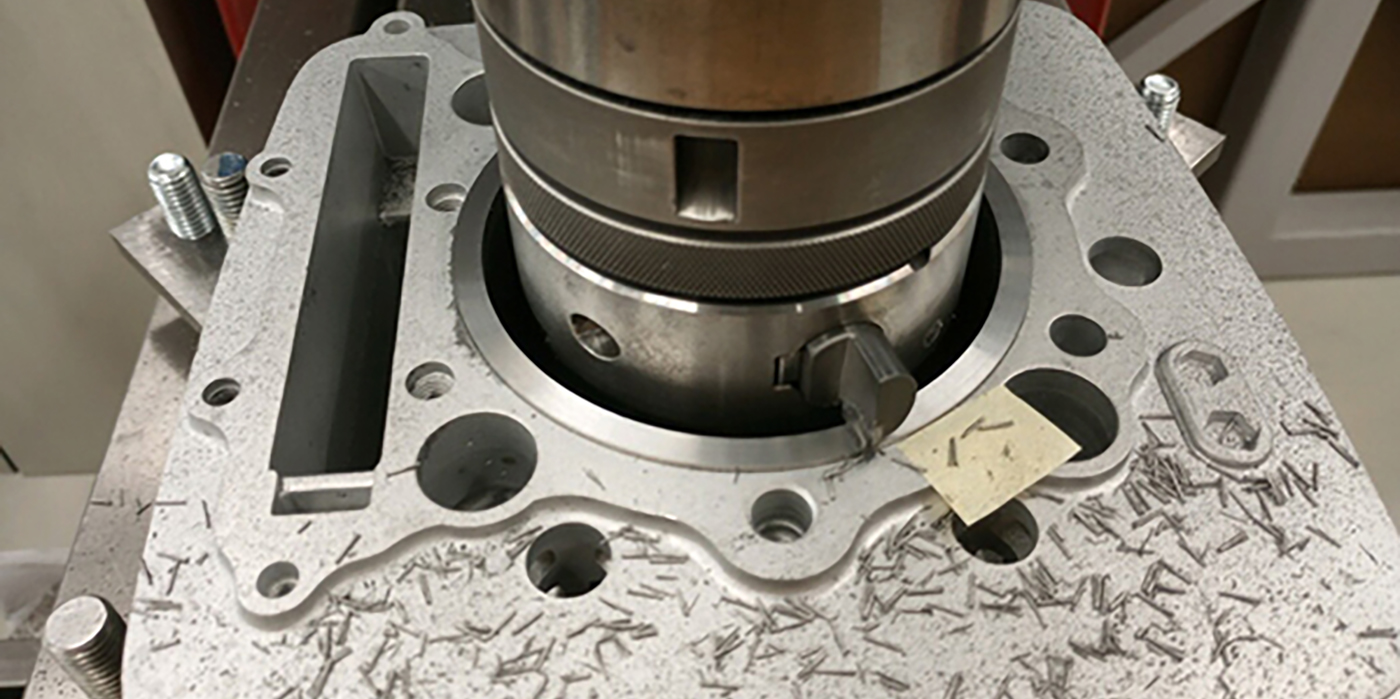5 Tips For a Manual Milling Machine
Editor’s Note: A manual milling machine is typically at the heart of every machine shop. In the following, Jim Kovach gives some useful tips on how to get the most from your mill.
1. Always use a high-quality machinist’s square on the mill. You will be surprised how close you can get. I checked my combination square against a master square comparator and found it to be within .002? of square at 10 inches off the surface plate.
2. Cut the long shanks off your drill chucks. The R-8 collet is only one inch long inside. How much shank do you need up there? Consider all the time you spend cranking the knee up and down to get the chuck in and out of that long shank. Buy two drill chucks with different diameter shanks on them. This allows you to save time on tool changes when you have the same shank diameter as your cutting tools (end mills/drills).
3. Don’t put an end mill in a quick change drill chuck. This is tempting at times, but is a pure rookie move. If the end mill chatters for a nano second, the chuck loosens and all hell breaks loose!
4. Remove the drawbar every so often, clean it and put a drop of oil or light assembly lube on the threads. You should be able to spin this with your fingers. If it doesn’t spin freely, get a new one – the threads are probably deformed.
5. Use the spindle motor to rapidly traverse the collet out after you break it loose with a wrench. Hold only the drawbar lightly with your fingers and catch the collet as it falls. Better yet, invest in a power drawbar. Once you have tried a power drawbar, you will wonder how you managed without it. No more smashed fingers or wrenches rattling over your head.
Jim Kovach
Kovach & Assoc. Performance Engine Building
Parma, OH
Drilling Bolt Holes
When drilling a hole into a blind or other hole where depth is critical, use a piece of tape on your drill bit as a gauge. Or use enough tape so that it will act as a stop.
Paul Wampler
Engine & Performance Warehouse
Denver, CO
Making a Solid Lifter
Ever get caught without a solid lifter to check static valve-to-piston clearance on a Chevy hydraulic cam? I have. I don’t know what happens to all my used Chevy solid lifters. Too much house cleaning?
Many may already know this, but here is the tip: Take a new stock Chevy hydraulic lifter (or even a gently used one). Remove the clip (but don’t lose it.) Remove the cap, valve and spring. Invert the valve so the bottom is up and replace the in lifter body. Then set the cap back on.
The clip fits perfectly. Now you have a solid lifter to check your VTP.
Jim Feurer
Animal Jim Racing
Lacon, IL
Separating ‘Stuck Together’ Pails
 Most shops have ice cream pails or five-gallon plastic or steel pails for storing stuff or catching drips, etc. The problem is that whenever you need one, at least five are stuck together so tight that you have to ruin one just to get one loose to use.
Most shops have ice cream pails or five-gallon plastic or steel pails for storing stuff or catching drips, etc. The problem is that whenever you need one, at least five are stuck together so tight that you have to ruin one just to get one loose to use.
Here’s the trick: Take an air blow gun and shoot a blast of air between the seam of one pail top and the side of the other pail. They will pop apart just great and you will not damage
either one. Works every time!
Rene` Grode
Valley Auto Parts, Inc.
Black Creek, WI
Be Sure To ‘Color Code’ Remote Oil Filter Lines
I recently had one of my customers change a transmission in a 10.00 second index bracket drag car. It is a small block V8 Vega with large Stahl headers. The car is equipped with a remote oil filter and has two steel braided lines, one line each for “In” and “Out.” I had the lines and the housings marked in multiple places so as not to get the lines reversed.
The mechanic who helped my customer change his transmission is one of the best mechanics and also one of the best drivers on the East Coast. Somehow they got the lines reversed. They fired the car and drove it to the lanes. During the burnout and then the run, they noticed zero oil pressure. The car had an abundance of oil pressure its entire life. The mechanic called me via his cell phone and asked “what happens if the oil lines are reversed?” I told him it could be disastrous. We pulled the engine apart at the owner’s request and were lucky it had minimal damage (thanks synthetic racing oil!).
The oil filters are not designed to work backward. There is much less surface area on the inside than on the outside. It’s kind of like trying to pour transmission fluid in a funnel starting at the small end! To correct the problem this time I used a red and yellow paint pen and marked the fittings, housings and lines accordingly. Red to red, yellow to yellow, etc. I also took red and yellow electrical tape and wrapped the braided steel lines accordingly. Then I put a color-coded tie wrap around the tape just in case it wanted to fall off.
My point is that even great mechanics make mistakes as illustrated here. I like to eliminate all potential problems if possible. I am sure this has happened to some of you before. Hopefully this tip helps! It may even be effective for color-blind people because they can still see yellow!
Jeff "Beezer" Beseth
Beezer Built, Inc.
Newtown Square, PA
Yet Another Way To Remove Pilot Bearings and Bushings
Editor’s Note: Previously in this space, we have run Shop Solutions on several variations for removing pilot bushings from toilet paper to Play-Doh, and here is yet another twist on this topic that continues to live on from Rick Lake at Lake’s Machine Shop. While most of these are comical in nature, they really do work!
To remove a pilot bearing or bushing from the end of a crankshaft, just pack Play-Doh in the hole. Then use a wooden dowel to force it out. There is no mess to clean up, an advantage over using grease to do the job.
Rick Lake
Lake’s Machine Shop
Needmore, PA
Engine Builder Shop Solutions is sponsored by Engine Pro,
a group of 9 engine parts specialist WDs in the U.S., and one in Australia, operating 35 branch
locations serving engine builders/rebuilders across the U.S and Australia. Authors of Shop
Solutions published in each issue of Engine Builder Magazine are awarded a prepaid $100 Visa gift card. Entries will be chosen by
the staff of Engine Builder Magazine and the Engine Pro Technical
Committee.
To submit a Shop Solution simply mail your entry
to Engine Builder Magazine, Shop Solutions, 3550 Embassy Parkway,
Akron, OH 44333; or email to Shop [email protected]. Shop
Solutions may also be emailed to [email protected].
You must include
your name, shop name, shop address and shop telephone number. Submitted
Shop Solutions not published will be kept on file and reevaluated for
publication with each month’s new entries. If you include your email
address you will be emailed notification of publication if your Shop
Solution is chosen.













